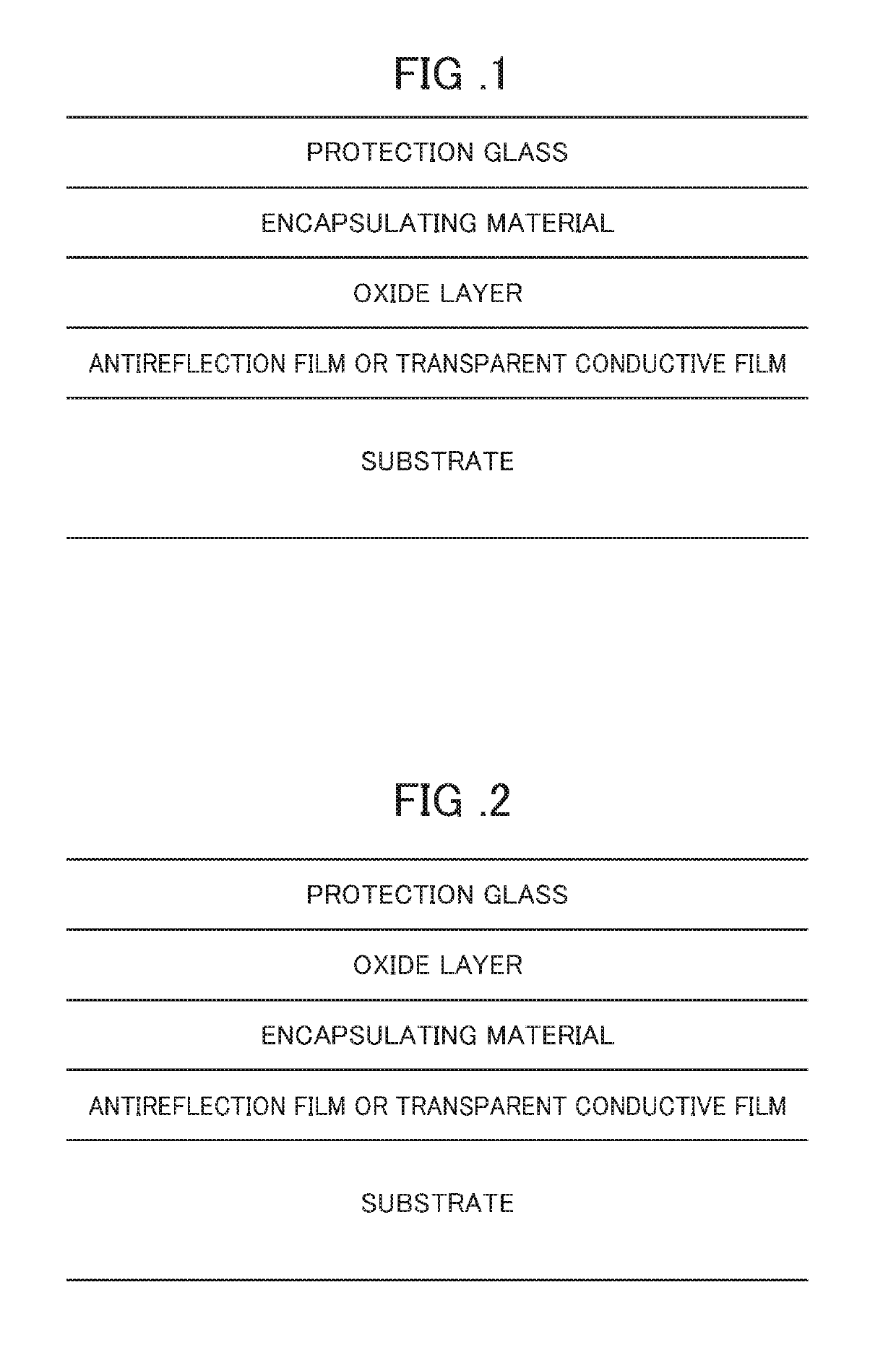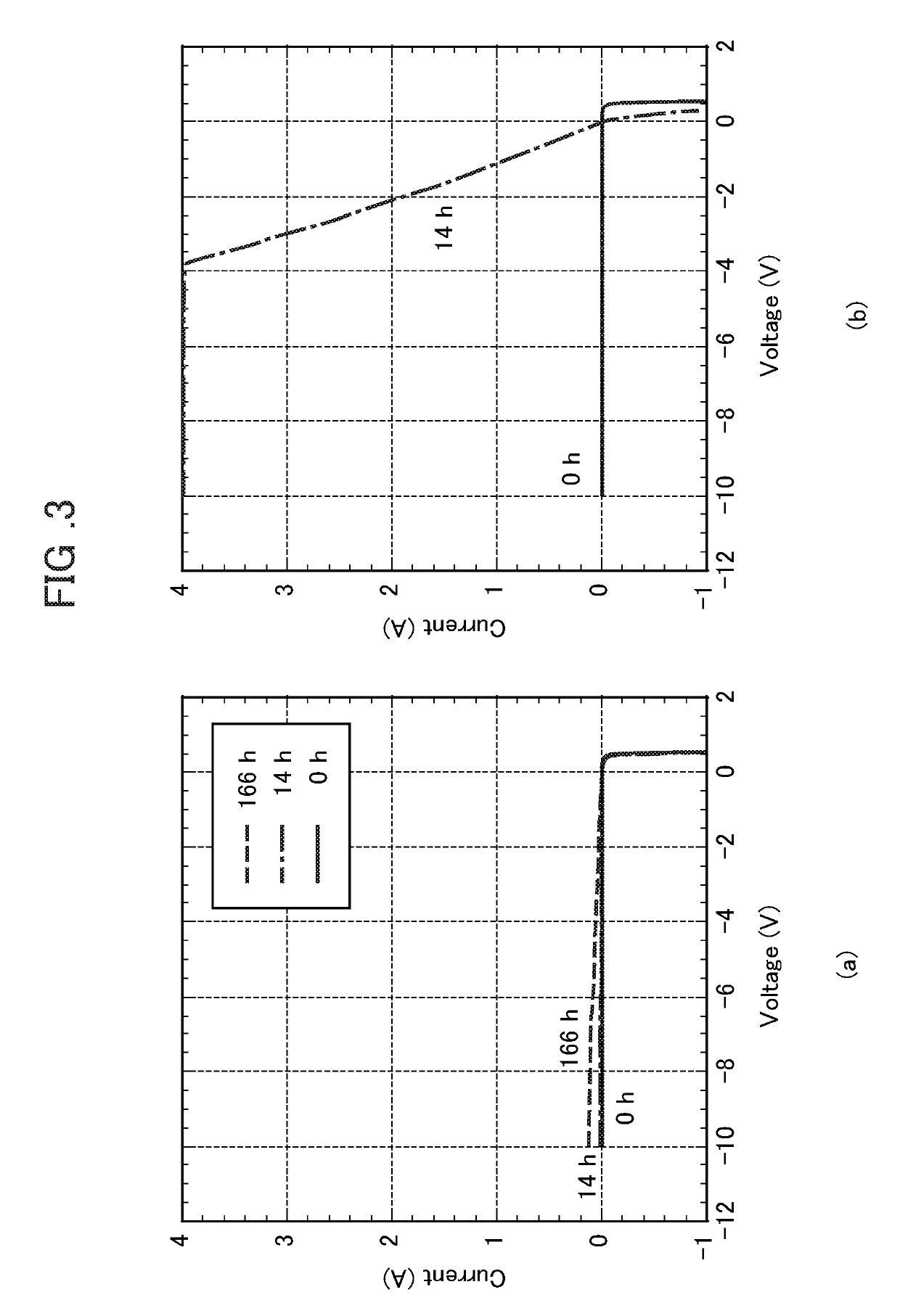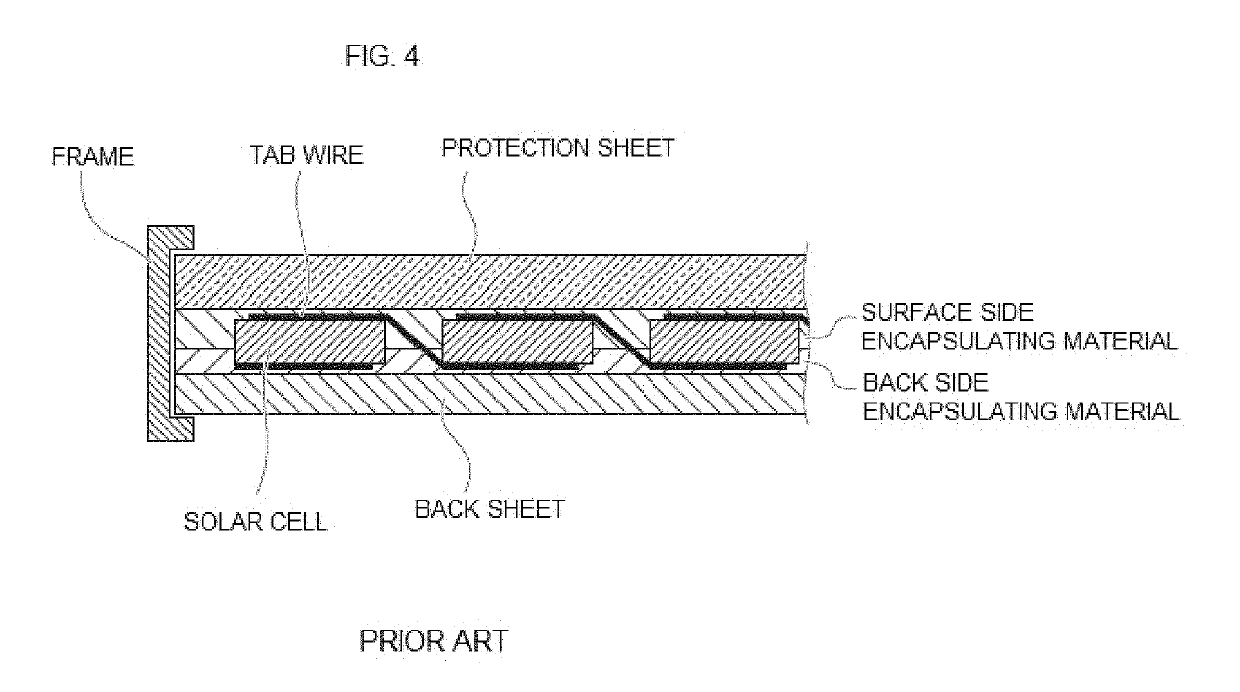Solar cell module and method for manufacturing the same
a solar cell and module technology, applied in the field of solar cell modules, can solve the problems of potential difference between the ends of the connected portion, frequent deformation due to potential induced degradation (pid), and high temperature and high humidity in the power generation system, so as to prevent the accumulation of na+ ions, suppress the occurrence of pid damage, and prevent the dissolution and diffusion of na+ ions
- Summary
- Abstract
- Description
- Claims
- Application Information
AI Technical Summary
Benefits of technology
Problems solved by technology
Method used
Image
Examples
example 1
[0086]As a monocrystalline silicon semiconductor substrate, a monocrystalline p-type silicon wafer having a length of 156 mm, a width of 156 mm, and a thickness of 0.2 mm was used. The p-type impurity was boron (B). The upper surface of this wafer was etched with a KOH solution to form a textured framework having an irregular shape. Subsequently, the upper surface of the wafer was coated with POCl3, then phosphorus (P) was diffused into the silicon through heat treatment at a high temperature to form an n+ region, thereby fabricating a monocrystalline silicon semiconductor device having a pn junction.
[0087]Next, a silicon nitride film was formed on the surface of the substrate on the light receiving surface side on which a textured surface was formed at a thickness of 60 nm by plasma enhanced chemical vapor deposition. Thereafter, silver paste and aluminum paste were printed and dried for the formation of the electrode. Thereafter, heat treatment was conducted at 800° C. for 3 secon...
example 2
[0095]A solar cell was fabricated according to the same procedure as in Example 1. Thereafter, a film was formed on the entire surface of the light receiving surface of the solar cell by a sputtering method. By using manganese and silicon sputter targets and controlling the input power to each target, manganese and silicon were deposited on the film while controlling the composition ratio of manganese:silicon=2:1 in atomic % to form a thin alloy film having a thickness of 15 nm. Subsequently, the thin alloy film was subjected to heat treatment at 400° C. for 5 minutes in the air, thereby forming an oxide layer which contained manganese and silicon and had a thickness of 24 nm. The atomic % concentration ratio in the oxide layer was Mn:Si:O=28:14:58.
[0096]Next, the surface of the bus electrode of the solar cell was coated with a solder flux and the tab wire was soldered. Thereafter, soda-lime glass, EVA, solar cell, EVA, and back sheet were stacked in this order to form a laminate st...
example 3
[0098]The influence of the thickness of the oxide layer containing a metal element and silicon was investigated. An oxide layer composed of manganese and silicon was formed by a sputtering method according to the same procedure as in Example 2 except the thickness. By changing the sputtering time, alloy films composed of manganese and silicon with different thicknesses were obtained. Thereafter, the alloy films were subjected to heat treatment to form an oxide layer according to the same procedure as in Example 2 except the thickness, thereby fabricating specimens of solar cell modules having different thicknesses of the oxide layer. These specimens were subjected to the PID test, and the leakage current and conversion efficiency of the solar cell module were measured.
[0099]As the determination criteria, those corresponding to “favorable” (a reference leakage current of 0.5 A or less and a relative decreasing rate of 3% or less) were denoted by “◯”. The results of the test are prese...
PUM
 Login to View More
Login to View More Abstract
Description
Claims
Application Information
 Login to View More
Login to View More - R&D
- Intellectual Property
- Life Sciences
- Materials
- Tech Scout
- Unparalleled Data Quality
- Higher Quality Content
- 60% Fewer Hallucinations
Browse by: Latest US Patents, China's latest patents, Technical Efficacy Thesaurus, Application Domain, Technology Topic, Popular Technical Reports.
© 2025 PatSnap. All rights reserved.Legal|Privacy policy|Modern Slavery Act Transparency Statement|Sitemap|About US| Contact US: help@patsnap.com



